It’s strange how certain aspects of your life begin to feel like your new “normal”. Like debilitating stomach pains after eating, a lack of energy that sends you to bed at 9:00 every night and feeling sluggish almost all of the time. I never really paid much attention to how I was feeling; I just knew that sometimes I didn’t feel great and I figured that was normal.
Turns out, it’s not. You shouldn’t feel worse after you eat a meal, or feel like you’re trudging through life, barely able to make it to the end of the day. Eventually, you get sick of this feeling and wish there was something you could do to turn it around.
This is when I decided to do something about it. Prior to this, I thought I ate pretty healthy. I ate three meals a day with a good range of foods. Nothing was off the table for me – grains, sugar, dairy – all of it was part of my daily intake in some way or another. I didn’t deprive myself of certain foods out of guilt or mark classifications of food as “evil”. That didn’t mean I was eating heaping pizza and pasta everyday finished off with ice cream and brownies, but if I wanted those things, I would eat them in moderation. Of all the foods I ate, I would say sugar was my weakness. I loved sweets and could rarely turn down a slice of birthday cake in the office or a cookie at a meeting – even if it wasn’t a good cake or cookie, I still ate it.
Most of what I was hoping to change was the strange reactions I would have to eating. At least once a week I would complain of sharp, stabbing pains in my abdomen and I could never figure out what it was. I had always wanted to figure it out, but it never seemed like the right time and, honestly, I didn’t know where to begin.
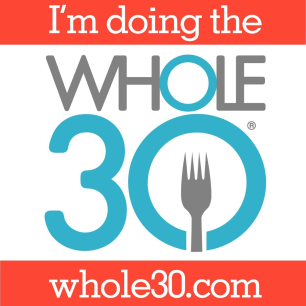 So, what was the program?
So, what was the program?
The 30 Day Reset that my friend Michelle Grocholsky and Dr. Jordin Wiggins at Health Over All created was based off of The Whole 30. You may be familiar with it – it’s been around for a little while. I was not, so I did a little bit of research before I started to see what I’d be getting myself into. The Whole 30 is not a diet and it is not a cleanse. It is a reset. It’s a way to rid your body of the foods that commonly cause problems for your digestion, health, energy and overall wellbeing. For 30 days, you go without these foods, while still eating lots of other delicious things, and then systematically reintroduce them in a way that allows you to determine which of these foods, if any, have negative effects for you.
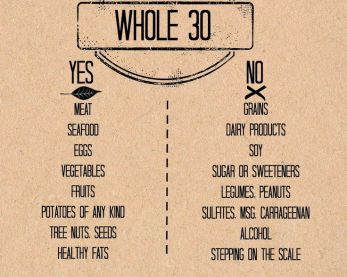 So, what was off-limits? No grains of any kind, including rice, corn, wheat and quinoa. No dairy. No legumes, including peanuts and soy. No alcohol, not even in cooking. No added sugar of any kind, no matte how natural it is. Finally, no MSG, carrageenan or added sulphites. Something else that is off-limits on the Whole 30 is the scale – you’re not allowed to weigh yourself for 30 days. The intention here is to get you to really focus on how you feel rather than on a number.
So, what was off-limits? No grains of any kind, including rice, corn, wheat and quinoa. No dairy. No legumes, including peanuts and soy. No alcohol, not even in cooking. No added sugar of any kind, no matte how natural it is. Finally, no MSG, carrageenan or added sulphites. Something else that is off-limits on the Whole 30 is the scale – you’re not allowed to weigh yourself for 30 days. The intention here is to get you to really focus on how you feel rather than on a number.
You might be thinking, “What can you eat?”. Well, lots of fresh fruit and veggies, fish, meat, chicken, and nuts. You can even have caffeine!
The Planning Stage
I officially signed up to take part in the program in December. That gave me about 3 weeks to prepare. I started by picking up a copy of The Whole 30 and The Whole 30 Cookbook. I spent the next couple of weeks reading about the program: what was allowed, what was not, what to expect and some tips to get me through the 30 days. My favourite part was reading all the delicious recipes I would be able to incorporate into my weekly menu.
A few days before the start date, I sat down to create a meal plan for our first week. Health Over All sent us a meal plan, but I wanted to tweak it a little and add my own recipes. I did some grocery shopping to stock up on some staples. I cleared out our pantry of anything that was not compliant, like rice, pasta, beans, chicken broth, crackers and protein powder. In their place I added emergency lara bars, almond butter, coconut aminos, hemp hearts, nuts and cans of full-fat coconut milk.
By the time January 16 arrived, I felt ready. Mike, who was doing this experiment with me, and I enjoyed our last supper of pizza and wings with some beers and did one last weigh in the morning of the 16th.
Click here to read a detailed description of my 30 day meal plan
Week 1
The first week started out really well. Day 1 passed and I felt on top of the world. Then Day 2 hit. For lunch I made an avocado chicken salad over baby spinach. Bad. I kind of thought I had a problem with avocado, but often assumed it was the fried tortilla chips or the heavy burrito that it usually accompanied. Nope. Turns out – I’m allergic to avocado. About 20 minutes after my lunch, I started to get awful stomach pains and a wave of nausea wash over me. I ended up leaving work a couple of hours early to go home and rest. Not even able to turn to my comfort food of bread, all I could do was lay down, drink some water and hope the feeling would pass. Lesson learned: No more avocado.
Day 3 came and I felt better, but was confronted with my first challenge: cookies. At a friend’s house, there was a gorgeous tin of cookies being passed around that I would have normally tucked into right away. I resisted, but felt quite sad about it. On my way home that night, I remember thinking that 30 days was going to be such a long time to go without a treat here and there. It felt silly at the time, but I was really worried I’d be missing out on something. By the end of the week I was feeling better about going without the sweets. I had to just suck it up and move on. Would it be challenging? Yes – but I was determined to prove to myself that I could do it.
Aside form my avocado-induced sickness, I didn’t experience any of the “withdrawal” type symptoms outlined in the book. I still struggled with nighttime snacking (more out of habit than hunger), so I opted for healthy options like apple slices with almond butter or a handful of grapes. I wasn’t sleeping well though, which was a common problem of mine before the program. I still found myself falling asleep early and then tossing and turning throughout the night. Week 2’s goal would be to cut out the late night snacking and see if that made a difference.
Week 2
At the beginning of the second week I dared to try on a pair of dress pants I usually avoided like the plague. Two years before, they fit me great, but lately they were too tight and incredibly uncomfortable. Instead of getting rid of them, I kept them in my closet, haunting me from the hanger, a reminder that I had gained weight over the years. This time, however, they slid on and fit perfectly. I didn’t have to tug at the waistline, lay on the bed while I struggle with the button or undo them when I sat down. Considering it was still early in the program, I didn’t want to get my hopes up, so I chalked it up to being less bloated.
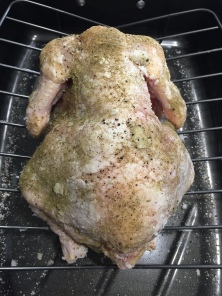
I roasted a chicken on the weekend and used the bones to make chicken stock so I could make some soup later in the week. This resulted in my house smelling ah-mazing all weekend long. After making the stock once, I will never buy store-bought again. It’s so easy and tastes way better.
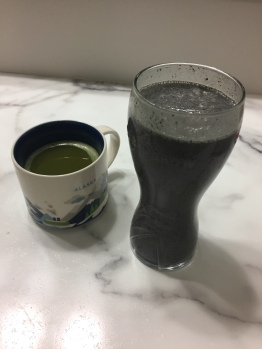 I began having smoothies for breakfast throughout the week, which worked out better for my schedule. Even though the egg breakfasts were incredibly satisfying and kept me full until lunch, I just couldn’t make it to work on time AND make the breakfasts. So, I added greens to my smoothie, extra protein sources and minimal fruit. This still kept me full until lunchtime and kept my sanity. The official Whole 30 is rather anti-smoothie, but in the real world, I need breakfasts that are quick and easy.
I began having smoothies for breakfast throughout the week, which worked out better for my schedule. Even though the egg breakfasts were incredibly satisfying and kept me full until lunch, I just couldn’t make it to work on time AND make the breakfasts. So, I added greens to my smoothie, extra protein sources and minimal fruit. This still kept me full until lunchtime and kept my sanity. The official Whole 30 is rather anti-smoothie, but in the real world, I need breakfasts that are quick and easy.
Once I stopped my nighttime snacking, I noticed that I slept a lot better. Maybe it was the sugar spike, or my body trying to digest the food while I slept, but whatever it was, a few nights of undisturbed sleep were enough for me to cut out this habit.
Week 3
I started my week off by mixing up my morning meals: I decided I wanted something a little different than just smoothies, so I made my version of an oatmeal. I blended cashews with boiled apples, vanilla bean and cinnamon. Then in the mornings I warmed it up, added some banana, hemp hearts, almond butter and whatever fresh berries I had on hand.
By this time I could definitely tell that I had lost weight. I didn’t join the program for the weight loss, but figured it would be an added bonus if I did. My clothes were suddenly much looser, I could feel my hip bones again and people at work were commenting that I looked like I had lost weight. It felt good to see that my dedication to see the program through was paying off.
Around the half-way point I hit a bit of a mental roadblock. I wasn’t noticing a huge difference in most of the other areas of my life. The Whole 30 promised a long list of potential “non-scale victories”, but I didn’t seem to be experiencing any of them. Meanwhile, others that had joined the same program were boasting of fewer headaches, decreased joint pain, clearer skin and increased focus. I thought maybe it was because I ate pretty healthy before, but it was kind of discouraging to not have this amazing revelation that so many others were describing. Determined to make it to the end, I pushed on.
Week 4
This week brought the challenge of dining out. We joined our friends for a breakfast date one morning. I thought it was going to be a challenge, but it wasn’t that bad. When we got to the restaurant, I asked the server some questions about how they prepared their foods, like what kind of oil they use, if there is dairy in the omelets, and if the bacon has added sugar. There were a lot more options that I could eat than I thought there would be, so I was pretty satisfied. Ultimately I ordered a vegetarian omelet with grilled tomatoes instead of toast and homefries cooked in olive oil instead of butter.
As I approached the endpoint of the program I started to notice a difference in a way I hadn’t expected – I was happier. I don’t know whether it was the weight loss, the food I was eating or the process, but my mood was much more stable. I felt content throughout the day with no “hangry” periods and seemed to enjoy myself much more. Even Mike started noticing a difference in himself. Most importantly, though, I was so happy with the fact that I had made it this far.
The final days: Days 28 – 30
My last few days of Whole 30 went by quickly, but the closer I got to the finish, the more worried I became. I was worried that I would gain back all the weight I had lost if I re-introduced certain foods. I started to feel like I was not in control for the first time in 30 days. For 30 days I had followed a strict way of eating that I was completely in control of and, obviously, it was having some positive changes. I like the way I felt and looked, and the idea of changing it scared me.
It’s strange to look at yourself in the mirror and see that you’ve changed on the outside and feel the change on the inside and then look to the future and know that the end is near. For me, I thought the end of the Whole 30 meant that I would gain back all the weight I had lost, I would fall back into old habits and I would negate all the good I had done in my body. I began to think about how I would re-introduce foods and two conflicting thoughts crossed my mind.

The first was that I was feeling good on a modified diet, so why should I mess with it? I wasn’t experiencing any earth-shattering effects, but I felt good overall. The stomach pains I often got after eating were gone, my energy level had improved (probably due to sleeping better as a result of cutting out late-night eating), and my mood had become more stable. So, if I felt this good, shouldn’t I just keep going?
Then, the second thought I had would come up. What about those foods that I had eliminated that I loved? Did that mean that I would never be able to enjoy a bowl of fettuccine alfredo or a slice of fresh bread? What about the apple fritter donuts I indulged in every once in awhile? The idea of going the rest of my life without any of these things was downright depressing.
The end?
Day 31 arrived and I couldn’t believe it. I had made it to the end without a single slip-up. Despite my worries or doubts, I did it and I felt incredibly proud. I ended up losing 8 pounds and an inch and a half off my waistline. I hadn’t experienced stomach pains or sickness since the avocado incident and I was sleeping more restfully. Many people had commented that I looked great, but more importantly, I felt great. When I looked in the mirror, I was happy with the changes I had seen, but it was more than that. I felt a renewed sense of purpose. I began focusing on my (non-food related) goals again. Part of the program was a coaching session with Michelle – this was a game-changer for me. She allowed me to see that my goals are within reach and with just a few decisive moves, I could get back on track.
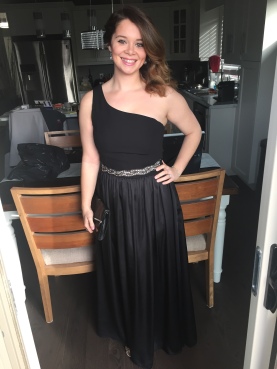
In the end, I believe that my Whole 30 experience was a success. But it didn’t stop there. The next part was Re-introduction and life after the Whole 30. Be sure to check back for an update soon!
-KQ












Wow what a great effort!
I often wondered as well how much we just put up with. I used to have terrible stomach cramps all throughout my childhood and only recently managed to rid myself of them.
The Whole 30 Experience sounds amazing. Sounds like you’re stepping into your power and are taking control 🙂
LikeLiked by 1 person
Thanks for visiting! It’s really been such a great experience!
LikeLike